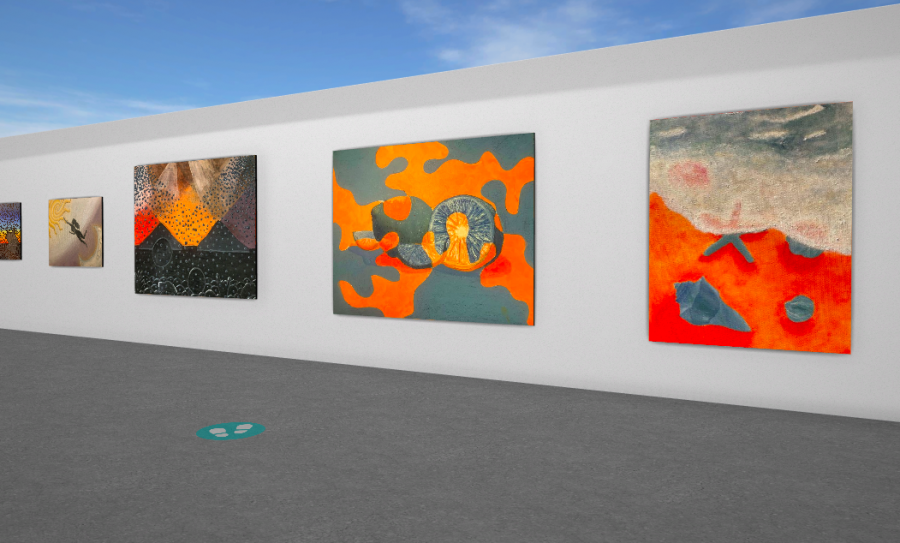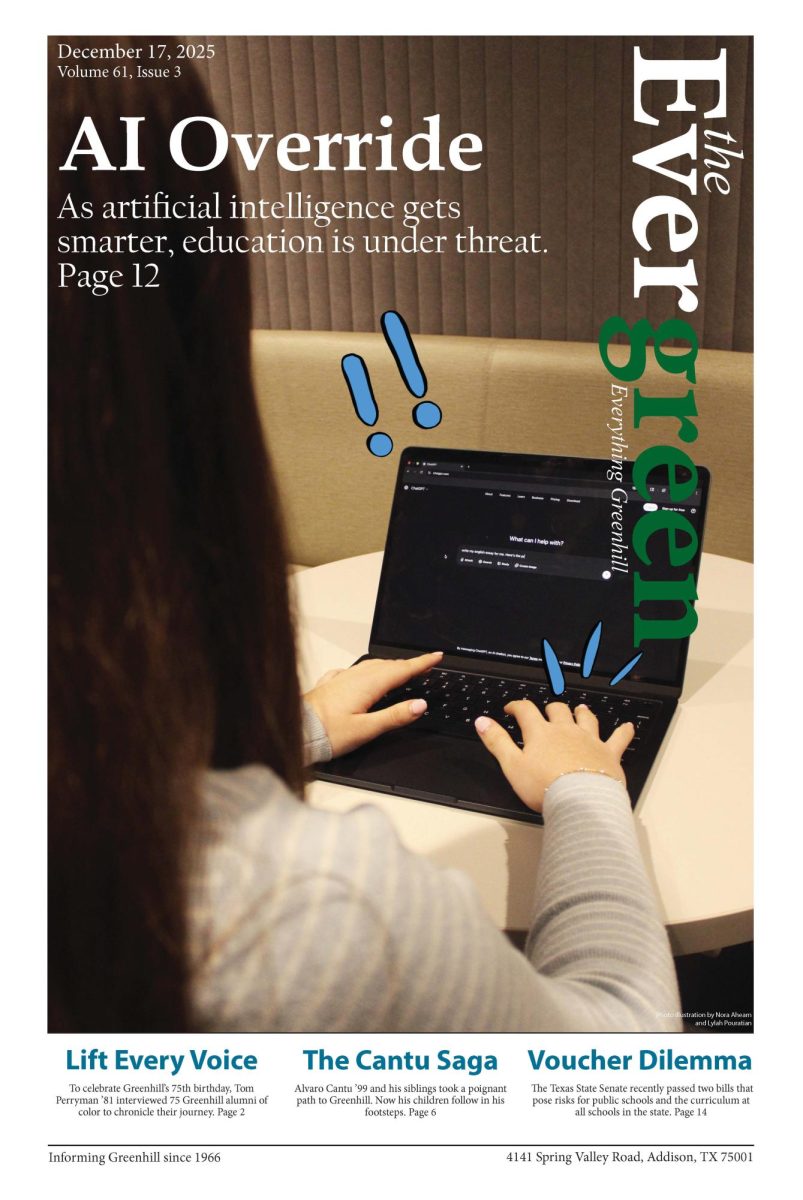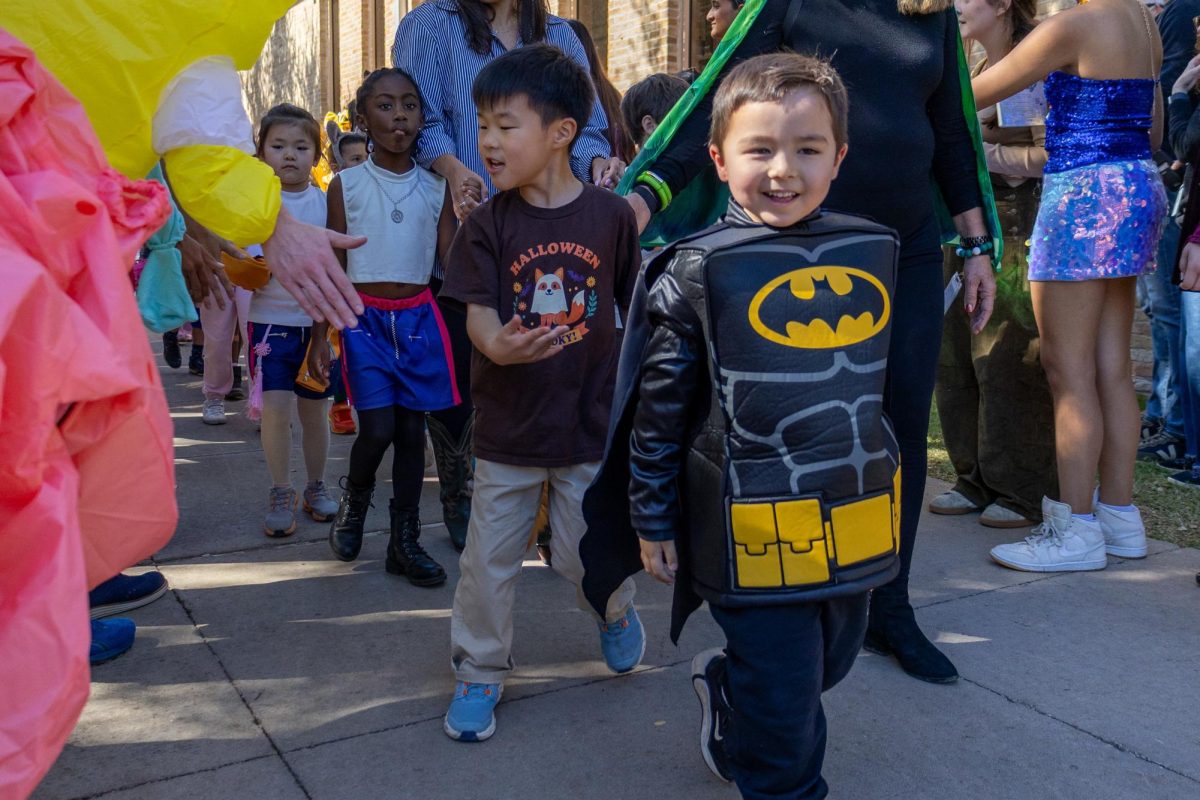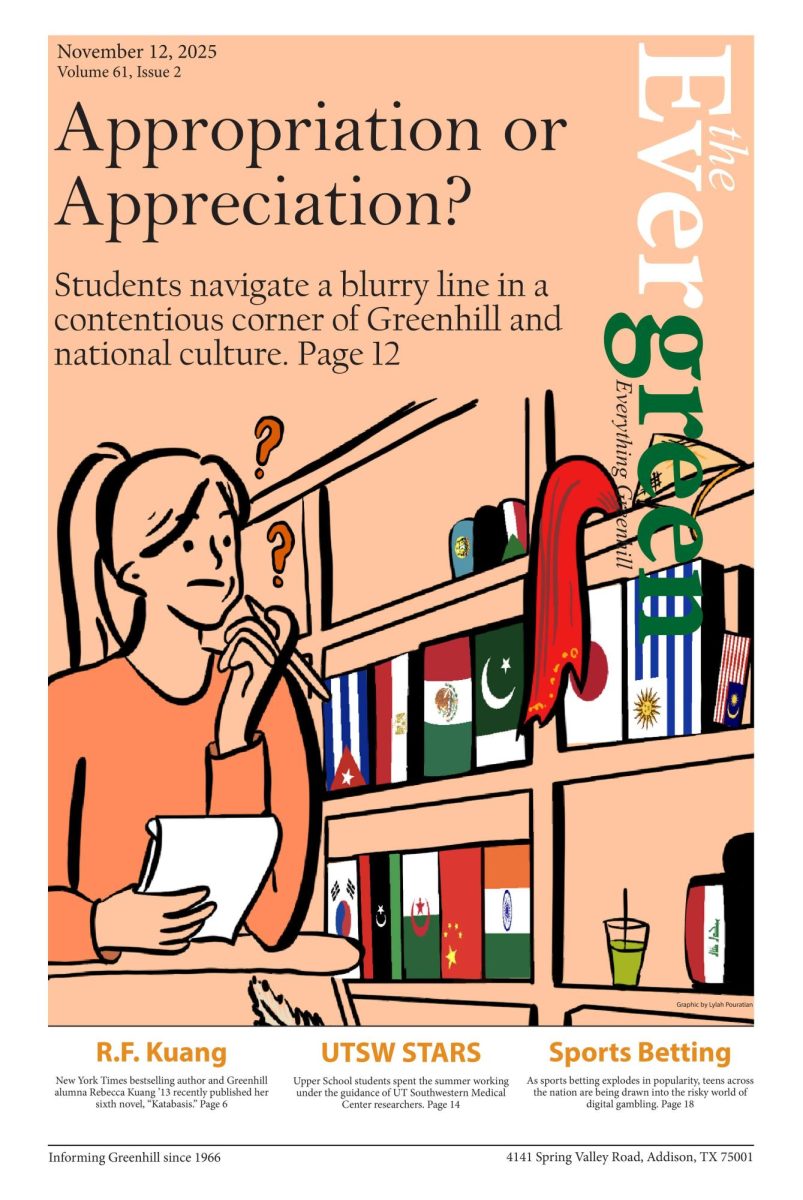Art Exhibits Featured on Online Platforms
Photo from the Artsteps online gallery
Online gallery features student work.
February 5, 2021
Due to the restrictions as a result of the COVID-19 pandemic, art exhibits have transitioned to online platforms rather than being in physical spaces for the 2020-2021 school year.
Greenhill’s art staff have been using a free platform called Artsteps to create online exhibits that maximize accessibility. After completing their art pieces, students took pictures of their hard work and teachers posted it to the exhibit, allowing for the artwork to be viewed by everyone as it would normally be seen in the hallways.
“[Artsteps] has ways for you to add walls and doors for your gallery space, and it also has pedestals that you can set up throughout the gallery,” Studio Arts teacher, Thomas Martinez said.
While hallway space is still being used, there is a limited amount of space due to distancing requirements and furniture being spread out, creating the need for these online platforms.
It was difficult to try and talk to everyone online and in the classroom while adapting to such a different style of teaching. As students were both online and in-person, navigating the virtual space was an experience everyone needed to learn, says Martinez.
“Sometimes we walk around and give more attention to those physically in the art space. Depending on the number of students in the classroom, there may be limited interaction with those online. It is a good juggling act and a lot of balancing that we are having to overcome and develop,” Martinez said.
Inevitably, with the novelty of online art exhibits, there are challenges along the way. This is especially true with this being the first time Greenhill Art utilized online platforms.
The set up for the platforms was difficult for many teachers to manage, as there were logistical and organizational elements that had to be sorted out.
“It was time consuming,” Upper School and AP Studio Art Instructor Lesley Rucker said. “There was a lot of upfront work that took a great deal of time to have work ready for the online gallery. The site is easy to understand but each step takes time.”
Every student also had different amounts of resources and experiences when it came to showcasing their artwork, making it difficult to present.
“There was a variety of artworks, some were photographed at a really high quality,” Martinez said. “But the struggle came with students who are new to the class, and not being able to give them those hands-on techniques on how to photograph their work was tough.”
However, as an online platform, there are no restrictions as to who can view the work, meaning that parents, relatives, and friends who may normally not be able to view the art are now able to enjoy the fruits of their family’s dedication.
“It’s allowing more people the opportunity to view [art]. We had a few parents that were able to share with family overseas,” Martinez said. “It’s nice knowing that you don’t have to be in the physical space to appreciate what your student has created.”
Despite all the challenges and adaptations that teachers and students had to overcome, the entire experience was a great success, according to those that had participated.
“I would absolutely do online exhibits in the future,” Rucker said. “The chance to see student work in a gallery setting is more realistic than seeing an individual image of the work and is the next best thing to seeing [artwork] in-person.”








